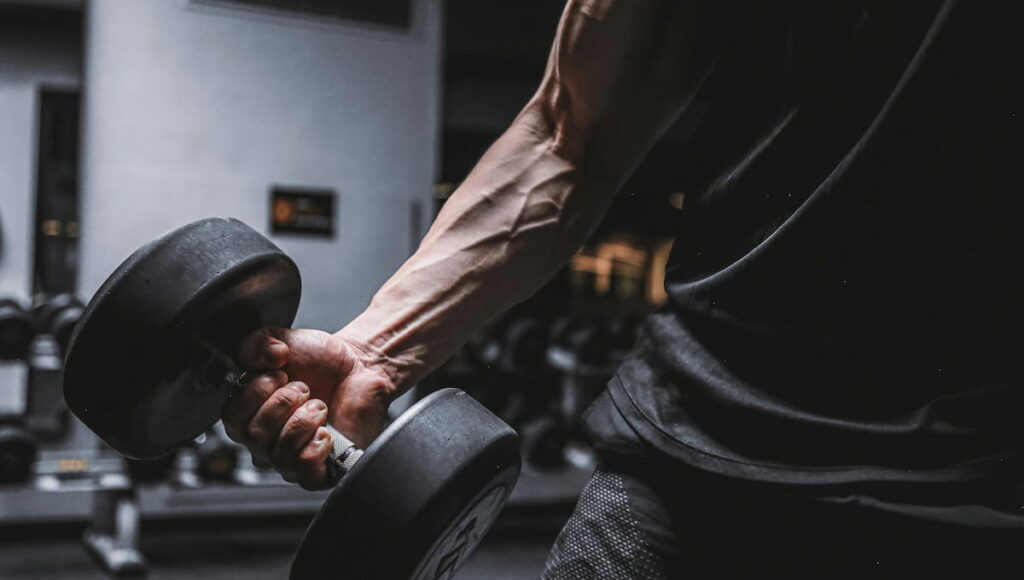Developing well-defined and muscular arms requires a strategic approach to training. While the biceps and triceps are relatively small muscle groups, they respond well to specific training methods that maximise hypertrophy.
In this article, we explore three of the best scientifically-backed methods to train your biceps and triceps for maximum growth.
1. Progressive Overload for Continual Growth
Understanding Progressive Overload
Progressive overload is the gradual increase of stress placed on muscles during training, which forces adaptation and growth (Schoenfeld, 2010). Without progressive overload, the muscles will plateau and cease to grow.
Applying Progressive Overload to Biceps and Triceps
To effectively apply progressive overload:
- Increase Resistance: Gradually add weight while maintaining proper form. Studies show that resistance training with loads of 65-85% of one-rep max (1RM) optimally stimulates muscle growth (Schoenfeld, 2016).
- Enhance Training Volume: Research suggests that 10-20 sets per muscle group per week is ideal for hypertrophy (Krieger, 2010). For biceps and triceps, training them two to three times per week with appropriate volume is key.
- Adjust Repetitions: Higher rep ranges (8-12 reps) have been shown to be effective for muscle hypertrophy (Schoenfeld et al., 2015). Periodically including lower rep ranges (4-6 reps) can improve strength, indirectly benefiting hypertrophy.
Example Exercises for Progressive Overload
Biceps:
- Barbell Curl: 4 sets of 8-10 reps
- Dumbbell Hammer Curl: 4 sets of 10-12 reps
- Preacher Curl: 3 sets of 8-12 reps
Triceps:
- Close-Grip Bench Press: 4 sets of 8-10 reps
- Skull Crushers: 4 sets of 10-12 reps
- Rope Triceps Pushdown: 3 sets of 8-12 reps
2. Exercise Variation and Movement Selection

Importance of Exercise Variation
Research indicates that varying exercise selection can stimulate muscle growth more effectively than performing the same exercises repeatedly (Fonseca et al., 2014). Different angles and grips recruit different muscle fibres, leading to more comprehensive development.
Best Variations for Biceps and Triceps
Biceps:
- Incline Dumbbell Curl: Places greater tension on the long head of the biceps (Wakahara et al., 2013).
- Reverse-Grip Barbell Curl: Engages the brachialis and increases arm thickness.
- Concentration Curl: Enhances muscle isolation and mind-muscle connection, shown to improve muscle activation (Neto et al., 2018).
Triceps:
- Overhead Triceps Extension: Stretches the long head of the triceps, promoting maximum growth.
- Dips: Proven to activate all three heads of the triceps effectively (Ebben et al., 2005).
- Kickbacks: While lower in overall load, EMG studies show they provide high triceps activation (Boeckh-Behrens & Buskies, 2000).
3. Time Under Tension (TUT) for Enhanced Hypertrophy
Understanding Time Under Tension
Time under tension refers to the duration a muscle remains under load during a set. Slowing down the eccentric phase (lowering portion) of an exercise can increase muscle damage and hypertrophy (Schoenfeld et al., 2014).
How to Implement TUT Effectively
- Slow Eccentrics: A study by McMahon et al. (2014) found that controlling the eccentric phase (2-4 seconds) increases hypertrophy compared to fast movements.
- Pauses and Isometric Holds: Holding tension at peak contraction recruits more muscle fibres.
- Moderate Reps with High TUT: 6-12 reps performed with slow, controlled movements enhance hypertrophic responses.
Example TUT Workouts
Biceps:
- Slow Barbell Curl (4-second eccentric): 3 sets of 8-10 reps
- Dumbbell Curl with Pause at Peak: 3 sets of 10-12 reps
Triceps:
- Slow Skull Crushers (3-second eccentric): 3 sets of 8-10 reps
- Rope Pushdowns with Iso-Hold: 3 sets of 12 reps with a 1-second peak contraction hold
Conclusion
Maximising biceps and triceps growth requires a well-structured approach incorporating progressive overload, exercise variation, and time under tension. Implementing these methods with consistency and proper nutrition will yield significant results.
Key Takeaways Table
| Method | Key Principle | Application |
|---|---|---|
| Progressive Overload | Gradual increase in resistance and volume to stimulate muscle growth | Increase weights, reps, or sets gradually while maintaining form |
| Exercise Variation | Different exercises target muscle fibres more effectively | Use different grips, angles, and movement patterns |
| Time Under Tension (TUT) | Extending time under load enhances hypertrophy | Slow eccentrics, isometric holds, and controlled reps |
References
- Boeckh-Behrens, W.U. & Buskies, W. (2000) Muscle Activation During Triceps Exercises: An EMG Analysis. Journal of Strength and Conditioning Research, 14(2), pp. 148-155.
- Ebben, W.P., Feldmann, C.R., Dayne, A.M., Mitsche, D., Alexander, P., & Knetzger, K.J. (2005) Muscle Activation During Lower Body Resistance Training. Journal of Strength and Conditioning Research, 19(3), pp. 615-621.
- Fonseca, R.M., Roschel, H., Tricoli, V., de Souza, E.O., Wilson, J.M., Laurentino, G., Aoki, M.S. (2014) Changes in Exercises are More Effective than in Loading Schemes to Improve Muscle Strength. Journal of Strength and Conditioning Research, 28(11), pp. 3085-3092.
- Krieger, J.W. (2010) Single vs. Multiple Sets of Resistance Exercise for Muscle Hypertrophy: A Meta-Analysis. Journal of Strength and Conditioning Research, 24(4), pp. 1150-1159.
- McMahon, G.E., Morse, C.I., Burden, A., Winwood, K., & Onambélé, G.L. (2014) Impact of Loading and Contraction Velocity on Adaptations to Resistance Training in Young Men. Journal of Strength and Conditioning Research, 28(9), pp. 2452-2466.
- Neto, W.K., Vieira, T.L., Gama, E.F. (2018) Biceps Brachii Muscle Activation During Different Elbow Exercises. Journal of Sports Medicine, 2018, Article ID 3753250.
- Schoenfeld, B.J. (2010) The Mechanisms of Muscle Hypertrophy and Their Application to Resistance Training. Journal of Strength and Conditioning Research, 24(10), pp. 2857-2872.
- Schoenfeld, B.J., Ogborn, D., Krieger, J.W. (2016) Effects of Resistance Training Frequency on Muscle Hypertrophy: A Systematic Review and Meta-Analysis. Sports Medicine, 46(11), pp. 1689-1697.
- Wakahara, T., Fukutani, A., Kawakami, Y., Yanai, T. (2013) Nonuniform Muscle Hypertrophy: Its Relation to Muscle Activation in Training Session. Medicine and Science in Sports and Exercise, 45(7), pp. 1316-1324.


